The standard measurements of a pallet are 100 x 120 x 12 centimeters, weighing between 15 and 21 kilos, and can easily withstand up to one ton.
However, this depends on the type of pallet, as there are many options: metal, plastic or wood, new or recycled, etc.
The choice between one type of pallet or another will also depend on the type of merchandise, load distribution, and support capacity.
What is a pallet?
A pallet is a structure that is used to move heavy loads because it facilitates its handling and lifting by using forklifts.
It can support a wide variety of goods while suspended in the air, secured by strapping or wrapping in plastic wrap.
Pallets can be lifted and moved with industrial product handling machinery such as conveyors.
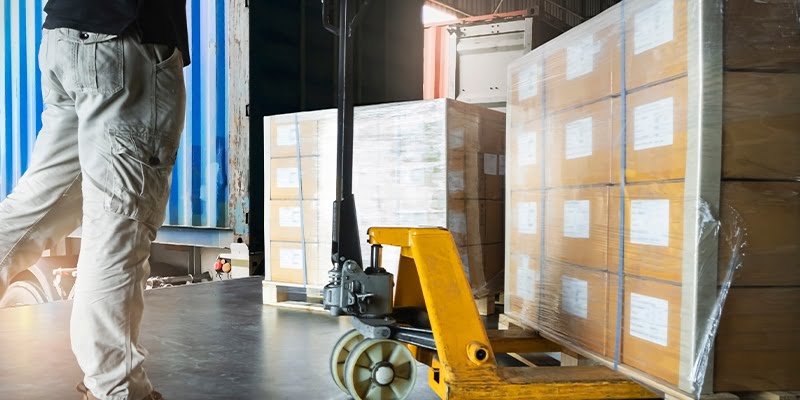
These are in charge of moving the pallets within the warehouse or to the vehicles that will transport them to other points.
Types of pallet
There is a large classification of types of pallets. Obviously, each and every one of them has a series of advantages and disadvantages that make them more or less suitable for different industries.
Wooden pallets
They are made out of wood or derivatives, which are grouped to create a platform.
Their manufacturing process is standardized to achieve the lowest possible height so that they can be easily transported by pallet trucks, forklifts, or other mechanisms capable of supporting heavy loads.
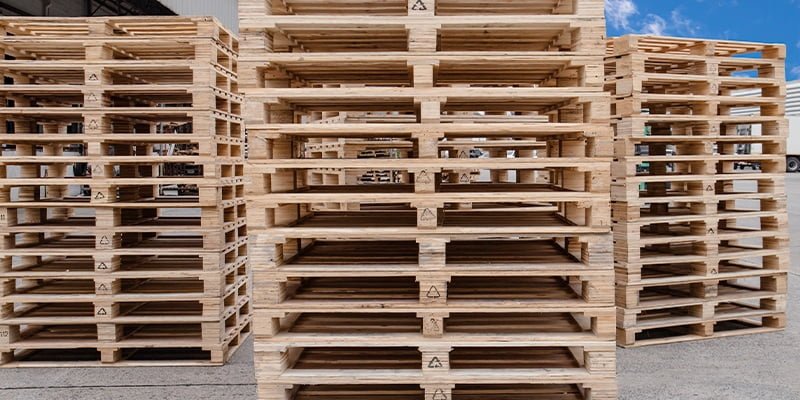
The main advantages of using wooden pallets are:
- They occupy little space and have great resistance
- They facilitate transport, handling, and storage.
Also, in recent years wooden pallets have been recycled by using them in homes in the form of furniture or other accessories.
Plastic pallets
Although the most widely used and widespread type of pallet is the wooden pallet, in recent years, thanks to technological advances, the functionality, and design of plastic pallets have been improved greatly.
They have even become essential for many industrial sectors, due to the many uses and advantages they offer.
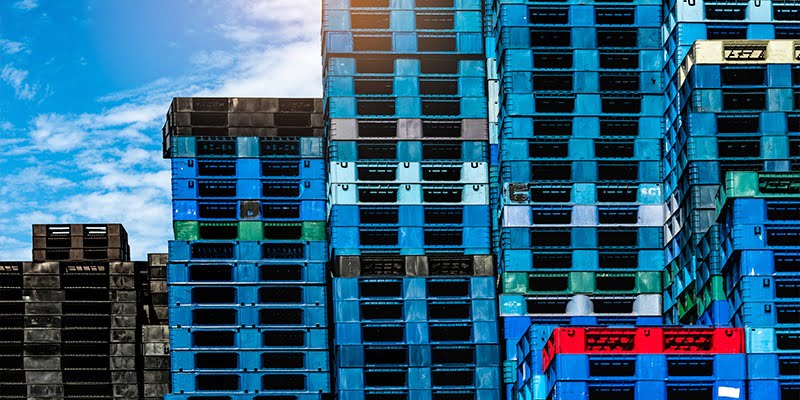
These pallets are used above all in those industries which have strict hygiene controls, as in the agri-food industry.
Advantages of plastic pallets
- They are efficient and light: They weigh half the amount of what wooden pallets weigh, which considerably reduces logistics costs when sending the same amount of merchandise.
- They are easy to clean: It can be done with antibacterial and chemical products or steam.
- They can be used in any weather condition, as they do not get damaged or absorb moisture.
- They are recyclable, reusable, and environmentally friendly.
- They are very durable, having a useful lifespan of up to 10 years.
- They adapt to automated systems and warehouses with technological systems.
- They are very hygienic.
- They are easier and safer to handle because you do not have to worry about nails or splinters, typical of wooded pallets.
Cardboard pallet
Corrugated cardboard pallets, in addition to being made with 100% recycled cardboard, are 100% recyclable, so they generate 0 waste.
They are 70% lighter than wooden pallets and not only reduce transport costs, but also reduce carbon emissions.
They are easy to handle and lift, reducing back pain and other injuries.
They are made from corrugated cardboard sheets and, although they can be manufactured in a standardized way, they can have many different shapes and formats, making them much more flexible than other materials.

Also, they can be graphically printed with your brand’s logos and slogans.
The 3 words that define cardboard pallets are: lightness, versatility, and resistance.
They can support surprising loads, even though they weigh very little.
They simplify the recycling and disposal process, taking them to any blue container is enough.
If you are implementing social responsibility policies in your company, which are becoming increasingly popular, be sure to use cardboard pallets to export or move goods.
Metal pallets
Another variant of pallets different from those made of plastic, wood, or cardboard, with their own specific uses.
Due to their high strength, metal pallets are frequently used in the metallurgical industry and the automotive sector.
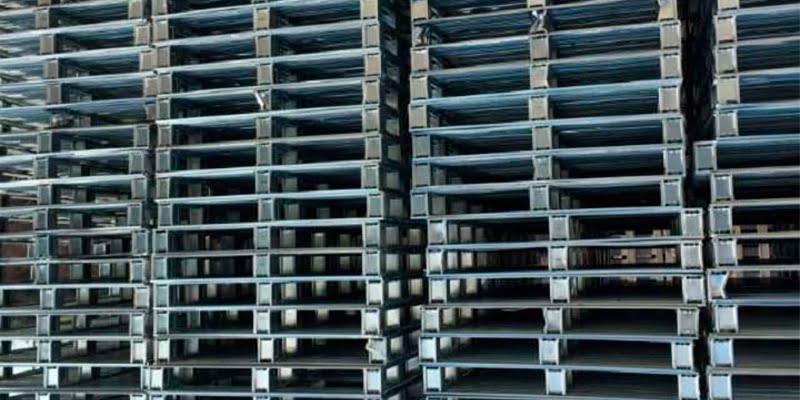
The manufacturing process of metal pallets follows the same criteria and measurements as European wooden pallets.
However, if different criteria are needed, the production process would have to be modified.
Presswood pallets
They are made from chipboard, and although they have been in use for over 20 years, they are the least known type of pallet.
Se utilizan muchos en los transportes internacionales, porque la carga media llega hasta los 200kg, aunque pueden llegar a soportar hasta 1350kg de carga.
Pallet measurements
There are many classifications on pallet measurements, but the one that should be followed is the one elaborated by the ISO (International Organization for Standardization), which establishes that the most common measurements for pallets are:
- 800 x 600 mm. For consumer products. They are usually made of wood or metal. The measurements are 31.50 ″ × 47.24 ″.
- 1000 x 600 mm. Used for handling liquids. They have little use.
- 1016 x 1219 mm. It is the most commonly used pallet in the U.S.A. Its measurements are 40.00 ″ × 48.00 ″.
- 1067 x 1067 mm. Pallets used in Europe, the U.S.A and Asia. Measurements, 42.00 ″ × 42.00 ″.
- 1100 x 1100 mm. Pallets usually used in Asia. Measurements, 43.30 ″ × 43.30 ″.
- 1140 x 1140 mm. Widely used in Australia. Measurements, 44.9 ″ × 44.9 ″.
- 1200 x 800 mm. European pallet or europalet. Used for consumer products. They weigh 25 kgs.
- 1200 x 1000 mm. American pallet. They weigh 18 kgs. Measurements, 39.37 ″ × 47.24 ″.
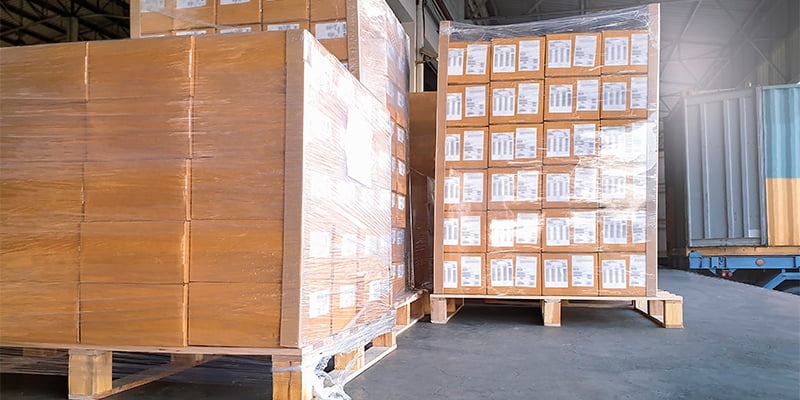
European pallet
The origin of the European pallet, or europalet, dates back to World War II, since a large quantity of food and goods needed to be transported to the military troops.
European pallets measure 1200 x 800 mm, which made it possible to carry large amounts of supplies in fewer trips and optimizing the distribution and logistics of pallets transported by trains.
European pallets weigh 25 kg and can support loads weighing over a ton. If the load is static, it can hold up to 4 tons.
Another fundamental aspect of European pallets is that they are perfect for cardboard and plastic boxes with standard measurements, which adjust to the size of the pallet.
They are widely used in automated warehouses. This is because they can be easily transported with forklifts.
How do I recognize European pallets?
The best way to recognize a europalet is to look for its EUR stamp. This way, we can be sure that the pallet follows the weight, design, and measurements established by the European Pallet Association (EPAL).

American pallets
This pallet also has its origin in World War II, as it was used as a loading system for the US Army.

The dimensions of the American pallet are 1200 × 1000 mm, with a weight of around 25 kg and capable of supporting dynamic loads of around 1,200 kg.
It is widely used to transport moving liquid substances and it’s the main alternative when transport between Japan and the United States.
Differences between European and American pallets
Taking into account that, more and more, warehouses are in full expansion and are constantly being automated, the European pallet has an advantage over the American pallet, because it has the perfect measurements to adjust to this type of warehouse.
However, the American pallet has more resistance to dynamic loads, therefore, to transport liquid substances, the American pallet should always be chosen over the European.
Both can be built with different materials, but the most common is the wooden pallet.
The deterioration of concrete floors as a consequence of the use of pallets
As we have seen previously, pallets can be made of different materials.They are mostly in constant contact with the industrial building’s floor, supporting large amounts of weight.
They are mostly in constant contact with the industrial building’s floor, supporting large amounts of weight.
A pesar de que normalmente se desplacen con transpaletas o carretillas elevadoras, siempre puede existir la posibilidad de que dejen restos de materiales, manchas o huellas en el suelo donde estén colocados.
Of course, accidents can also happen and pallets can be dropped, causing a lot of damage to the flooring.
In short, although pallets greatly facilitate logistics and the transportation of goods, they are not exempt from damaging the flooring within the facility.
Como siempre es mejor prevenir que, en este caso, reparar, os queremos ofrecer nuestro tratamiento BECOSAN®, un acabado a prueba de polvo, duradero y resistente para toda clase de pavimentos industriales, independientemente al uso que se le de y del estado en el que se encuentre previamente el suelo de hormigón.
Contact us
